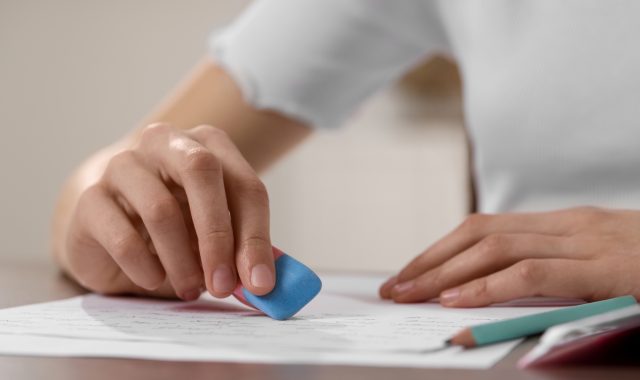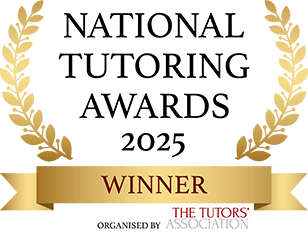There is a familiar reflection I often hear from students after any kind of assessment. They berate themselves because they have made lots of “silly mistakes”. These are mistakes that seem trivial compared to the skills that were really being tested by the assessment questions. Examples include: copying down information from the question incorrectly, applying familiar equations incorrectly, e.g. by multiplying rather than dividing, or simply omitting to respond to part of a question – the classic being the wrong number of decimal places.
Not ‘silly’
I am always at pains to impress on my students that these mistakes are not silly. One concern I have is that they are being too hard on themselves and another concern is that by dismissing such mistakes, they underestimate the challenge of learning to avoid them.
Above the age of seven, most of us should feel pretty confident to identify a leaf. But suppose through some dark portal, you were transported in an instant to the heart of the Amazonian rainforest. You would suddenly be surrounded by the unfamiliar, new bugs and birds and sounds and smells, but an absence of the familiar. In this terrifying change of circumstances, as you gather your wits to stay alive in this inhospitable terrain, is it conceivable you could suddenly have a mental blank and forget the name of a leaf? Or fudge some other name for it like plant hand? It is conceivable – and what’s more, it would not be silly. In a blind panic, nothing is simple.

Suddenly not so simple
When we view things or ideas in isolation, we may find them straightforward. If a question provides the information that a sample contains 10 g of a substance with a molar mass of 100 g/mol, all we need to do is substitute the values into an equation. But when a question provides a terse description of a complicated titration, requiring you to write a balanced symbol equation for the reaction, scale up from the number of reacting moles in the conical flask to the number of moles used originally to make the standard solution, and then calculate the mass of reactant in the sample from the number of moles, it is easy to accidentally divide instead of multiplying by the molar mass. That is not silly. The equation is simple in isolation, but when your brain – or, more specifically, your working memory – is keeping track of so many moving parts, it is harder to apply the equation correctly.
I wonder if such oversights result from a fear of losing one’s train of thought. Do we avoid letting our attention be diverted too much by a detail we can write off as trivial in the moment rather than risk all the mental plates we are spinning from clattering to the ground? To whatever extent this insight reflects the reality of how our brains work, my advice would be to let the plates fall where they may. By keeping careful notes during extended calculations, stating what each number represents, its units, and how it was calculated, we create a guide to get us back on track if we do lose our train of thought.
Digressions aside, our brains are in overdrive when we grapple with challenging mental tasks, which is how “silly mistakes” get made. But what is the solution to this problem?

More haste, less speed
As an educator, I often need to write my own questions for students. In such cases, I do not have the luxury of a mark scheme. Typically, what I do is take two routes to check they both reach the same destination or retrace my steps to make sure they lead back to the same origin.
If I were writing a titration question like the one above, I would start with the purity of the sample – I am writing the question, I can choose whatever I want, let’s say 86.1% – then decide on my reagents, and then calculate what would be the value of the titre of the reagent in the burette. Now I have found the numbers to supply in the question. The next step is to answer the question myself and make sure it has the same value for purity I originally selected.
This probably sounds incredibly time-consuming and not the kind of approach to use in an exam. There is a saying, ‘more haste, less speed’. Its meaning was not immediately obvious to me the first time I heard it, and with hindsight, I am not that surprised. In my youth, I had what I now casually refer to as a fast brain. I do not mean I could naturally do clever things quickly, but rather that thoughts arose, escalated and shuttled through my brain endlessly. I also tended to talk very fast. I was rushing. When you rush talking, you trip on your words or say stupid things without thinking. Then people will tend to laugh, interrupt or take offence, and your impulse to share whatever thought it was is delayed. When you rush, it slows you down.

The challenge of slowing down
Now, as it happens, I was not choosing these behaviours. But when I chose to try and slow them down, it was not as simple as saying to myself, I shall now do these things slower. It took years of constant effort.
There is a very interesting book called The Happiness Hypothesis, in which the author, Jonathan Haidt, compares the human experience to a person riding an elephant. The rider symbolises the prefrontal cortex that supplies our articular inner monologue, while the elephant is the foundational elements of our brains, comprising automated behaviours such as the fight or flight response. The rider thinks they are in control, but in reality, the elephant will mostly do exactly what it wants. The rider will not be able to stop the elephant in its tracks and turn it around 180° to walk back in the opposite direction. But with constant, patient encouragement, the rider may be able to make the elephant veer slightly left or right.
This symbolises the cultivation that has to be achieved before we arrive in the exam hall. When students do their homework, they should be ponderous and slow and think of two different routes to the same answer. They should take as long as they need to spot mistakes. Set aside a question, try another, and then return to the original question with cold eyes. Think of different ways to express the same information, transcribe a structural formula into a molecular formula and check that the equation is still balanced. Look at every number copied down from the question – did they transcribe 0.0224 as 0.0244? Read each number backwards, out loud – four four two zero point zero. Four two two zero point zero. Whoops!

They should take their time to ensure that their response is thorough. The more they practise this when they have the luxury of time, the faster and more automatic these checking habits will become.
Their goal is to get fast enough that they have no need to rush in the exam, because their natural rate of answering questions is fast enough to finish them all in the limited time available. And when they are not rushing, those “silly mistakes” will not get made.
As tutors, recognising and addressing the concept of ‘silly mistakes’ in our teaching can profoundly impact our students’ learning experiences. When students dismiss their errors as trivial, they miss an opportunity to engage deeply with the material and understand their own learning processes. It is crucial for us to help them see the value in scrutinising these mistakes.
Ultimately, our goal is to shift students from a mindset of hurried completion to one of thoughtful consideration. By integrating these practices into our tutoring, we can help students build a foundation of meticulousness that will serve them well beyond their academic years.







Comments